One of my favorite things to do on a hot summer day in Island Park is to float one of the rivers.
There are many floating options in the Island Park area. The most popular float is on the Henry’s Fork of the Snake River from below Big Springs to Mack’s Inn. Floaters can rent rafts and tubes at Mack’s Inn and book shuttle rides to drop them off at the starting point. You can also use your own tubes, kayaks or rafts and arrange your own drop-off/pick-up.
This is an easy, family friendly float that takes about 3 hours. The water flows smooth and slow and is rarely deeper than a few feet. Floaters will often see Moose along the way and can fish for trout by drifting a fly or other bait while gently floating down the river.
Other fun places to float are the Buffalo River (easy) from above the Buffalo Campground to Pond’s Lodge or the Snake River through Box Canyon (class 2 -3 rapids) to Last Chance.
Last but not least is the section of the Snake River starting about 8 miles south of Mesa Falls at Fisherman’s Drive Bridge. This is a nice easy float down to just past Highway 21 where you get out at the County Boat Dock.
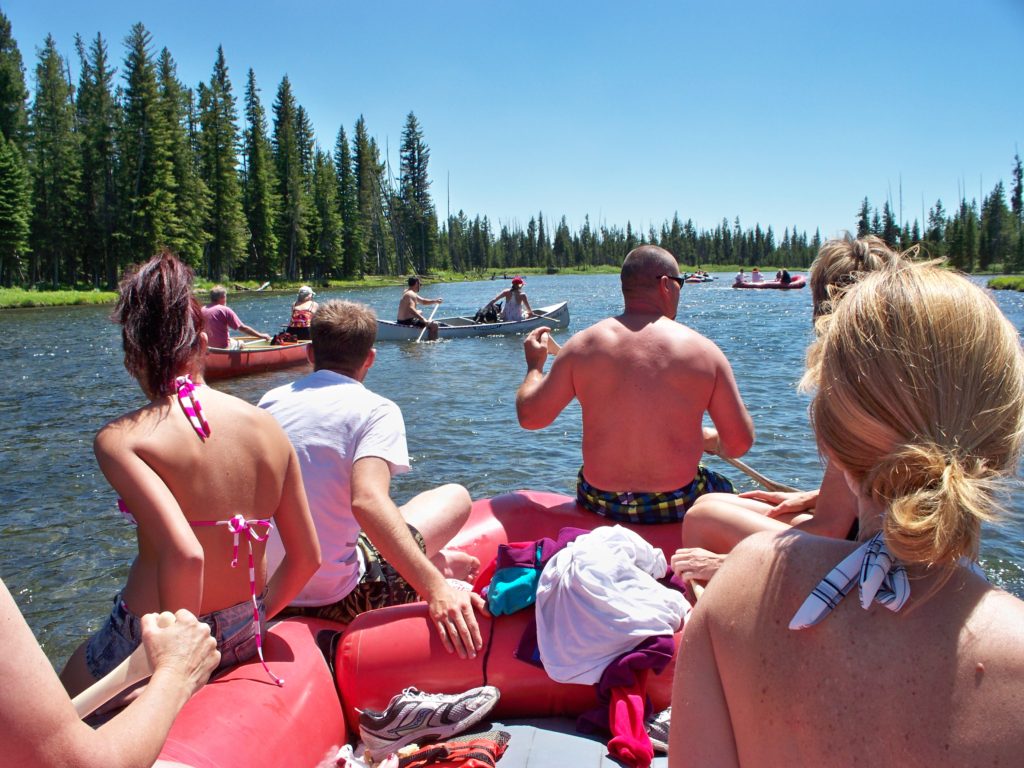
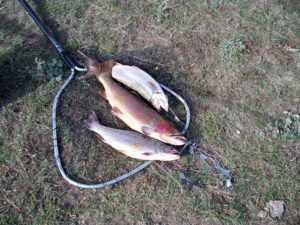
Island Park is renowned for it’s great fishing. Whether it’s fly-fishing, stream fishing, boat fishing or fishing from the bank Island Park offers them all. And there are Brook Trout, Brown Trout, Cutthroat Trout, Rainbow Trout, Hybrid Trout, Kokanee Salmon, Coho Salmon and Mountain Whitefish to be caught.
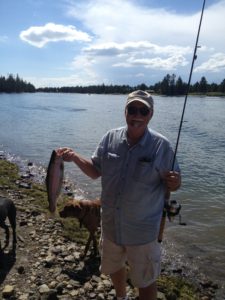
Henry’s Lake is probably the most famous fishing spot in Island Park but there are many other spots to choose from. Fly fishers like to fish the Henry’s Fork of the Snake River, Henry’s Lake Outlet, Warm River or Buffalo River among other spots. Boat fishers also have many choices including Henry’s Lake, Island Park Reservoir or Hebgen Lake.
Fishing does not end in winter here. Island Park Reservoir is a hot bed for ice fishing. You’ll often see ice fishing tents setup by Lakeside Lodge or the Dam. Hebgen Lake is another favorite place of ice fisherman. Every winter there are Ice Fishing Tournaments on both the Island Park Reservoir and Hebgen Lake. 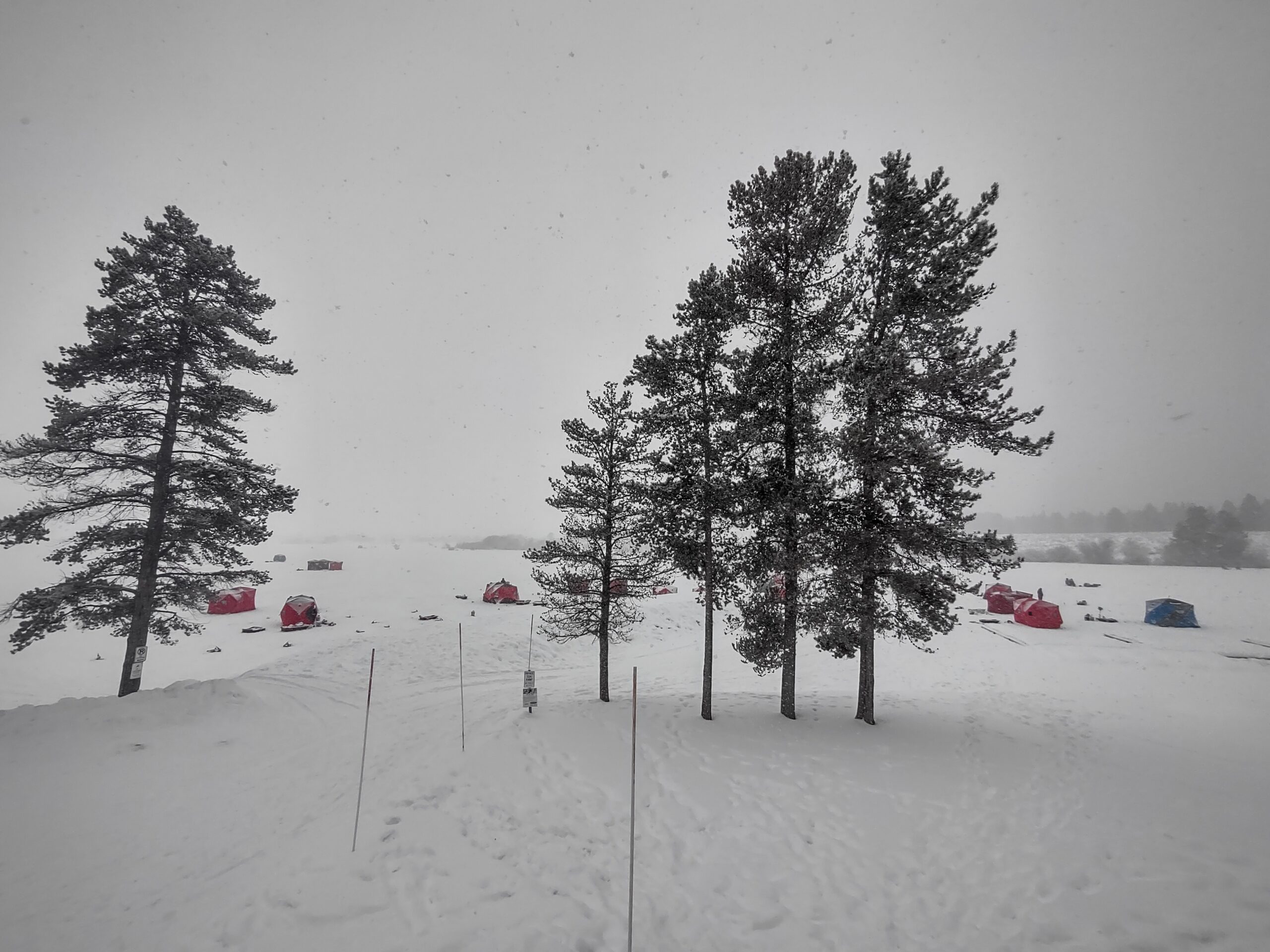
If you don’t know a lot about fishing, no worry. There are plenty of Fishing Guides available for hire and the local tackle shops are friendly and helpful with getting you setup and pointed in the right direction.
Island Park has a nice 9-Hole course. Call 208-558-0271 for information on getting a tee time.
You’ll find this course offers beautiful scenery of the surrounding mountains and meadows. It’s very economically priced compared to city courses and you rarely have other golf groups pressing from behind.
The greens are pretty tough, but considering the elevation and winters here they’re not that bad. There’s a good mix of 3, 4 and 5 par holes. If you want to warm up you can hit a bucket of balls on the driving range or practice on the putting green.
Island Park is among the most renowned places to snowmobile in the world. Whether you are an expert that wants to snowmobile on Mount Jefferson, or a first timer that just wants to ride the trails and see the sights, Island Park has it all.
There are over 500 miles of groomed trails in the Island Park area that are suitable for all skills and ages. These trails will get you anywhere in the Island Park area from Ashton to West Yellowstone and Hebgen Lake.
If you want a little more excitement than the trails, but not serious mountain sledding, there are numerous meadows and fields to carve up. There is also the Island Park Reservoir, which freezes over from December until March. Riding full throttle on the reservoir after a fresh snow is like racing on the Bonneville Salt Flats. What a blast!
If you need any help arranging for snowmobile rentals, guiding or just have some questions about snomobiling in general, give Tom a call at 208-866-9073.
We also have licensed Idaho Snowmobile Guides available if you want a guide to show you the beautiful scenery of Island Park with no worry of getting lost in the vastness.
(See Island Park Snowmobile Trail Map)
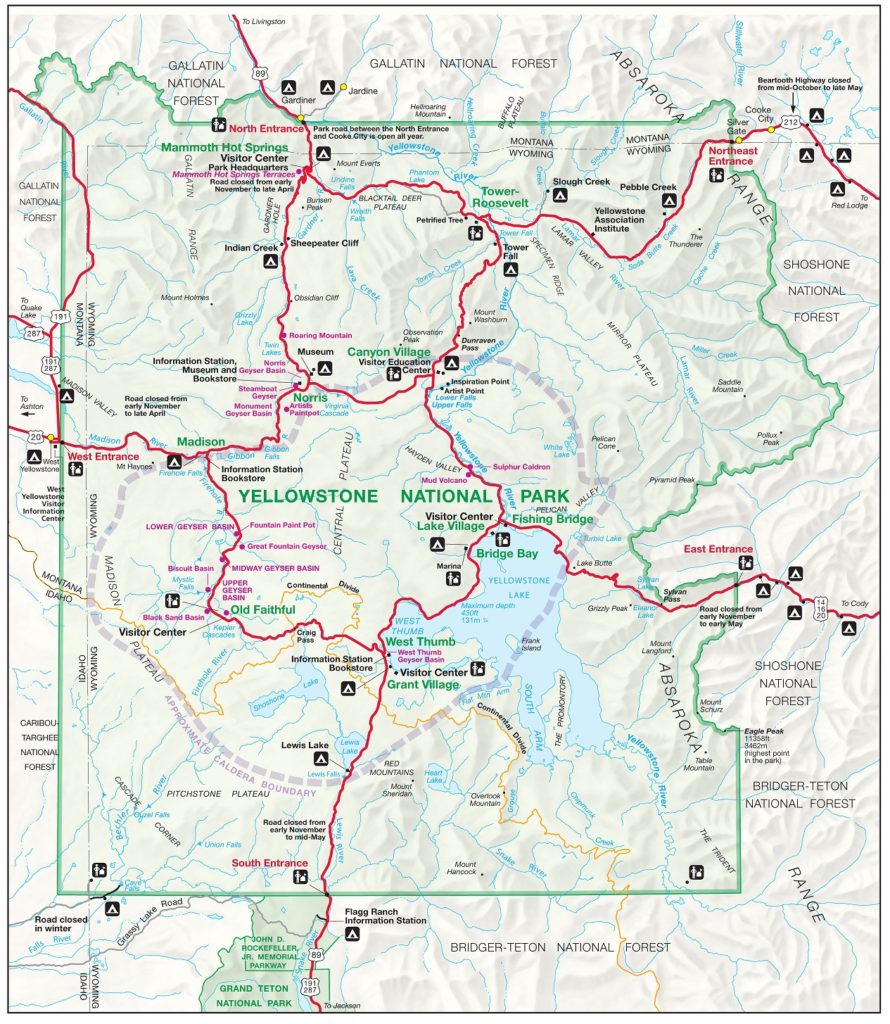
Yellowstone National Park is the world’s first national park and reknowned for it’s hydrothermal geysers and pools, stunning scenery and wildlife.
Yellowstone is also big – bigger than Rhode Island and Deleware combined. So when you visit Yellowstone plan at least two days to visit. Three or more days are recommended if you plan on hiking and seeing as many sites as possible.
Below are some of our favorite places and things to see in Yellowstone.
Old Faithful
Old Faithful is on the “lower loop” of Yellowstone and about a 60 mile drive from Island Park. Along the way are some of the most remarkable geyser basins, such as the Midway Geyser Basin, Biscuit Basin, Black Sand Basin and Upper Geyser Basin. Stopping and walking around all of these will take at least a few hours of your day.
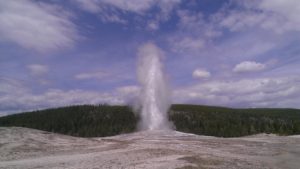
And, of course, there is Old Faithful itself. You can find out the approximate times that Old Faithful will erupt from the West Yellowstone Visitor’s Center – (406) 646-7701. Plan to arrive at least a half-hour before a scheduled eruption so you can find parking and get a good spot for viewing the geyser eruption.
After the geyser be sure to check out the historic Old Faithful Inn and its shops and restaurants. Ice cream is always a favorite treat to get at the Old Faithful Inn’s ice cream parlor.
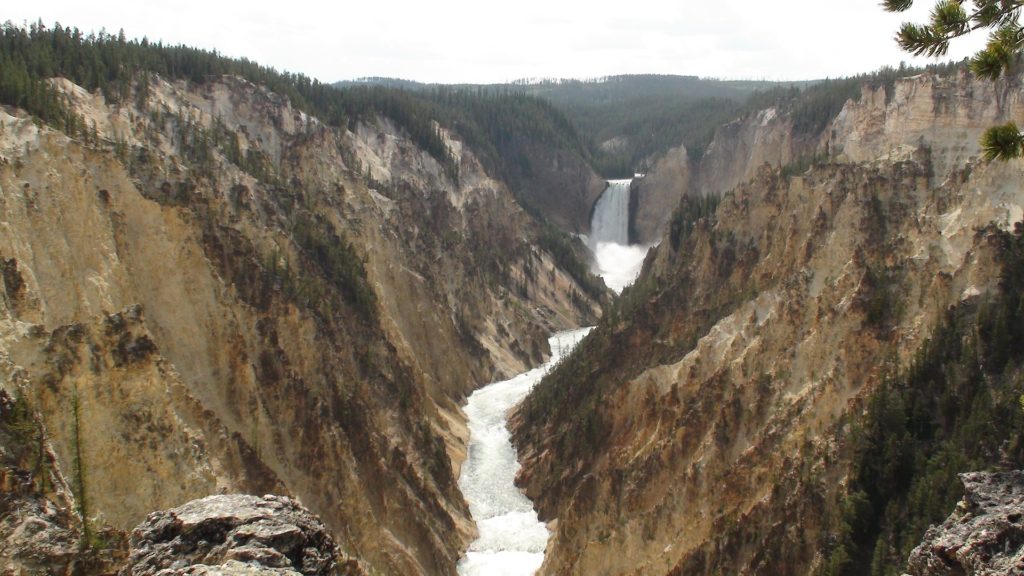
Grand Canyon of Yellowstone
The Grand Canyon of Yellowstone is also on the “lower loop” of Yellowstone. You can go there before or after visiting Old Faithful as part of the “lower loop” tour. If you like to hike there are trails on both sides of the canyon and you can hike far down into the canyon on the West side.
Nearby is Canyon Village, which has a very good Vistor Education Center. Visitors can learn a lot about Yellowstone’s geographic history, features and wildlife here. There are also stores, restaurants and a gas station here for resupply.
Wildlife Viewing
You are almost always guaranteed to see Bison when you visit Yellowstone. Bison is the technical name, not buffalo. Bison can be seen just about anywhere while driving through Yellowstone. Most times of the year you can find larger heards in the Hayden Valley on the “lower loop” or the Lamar Valley off the “upper loop” in the North East corner of Yellowstone.
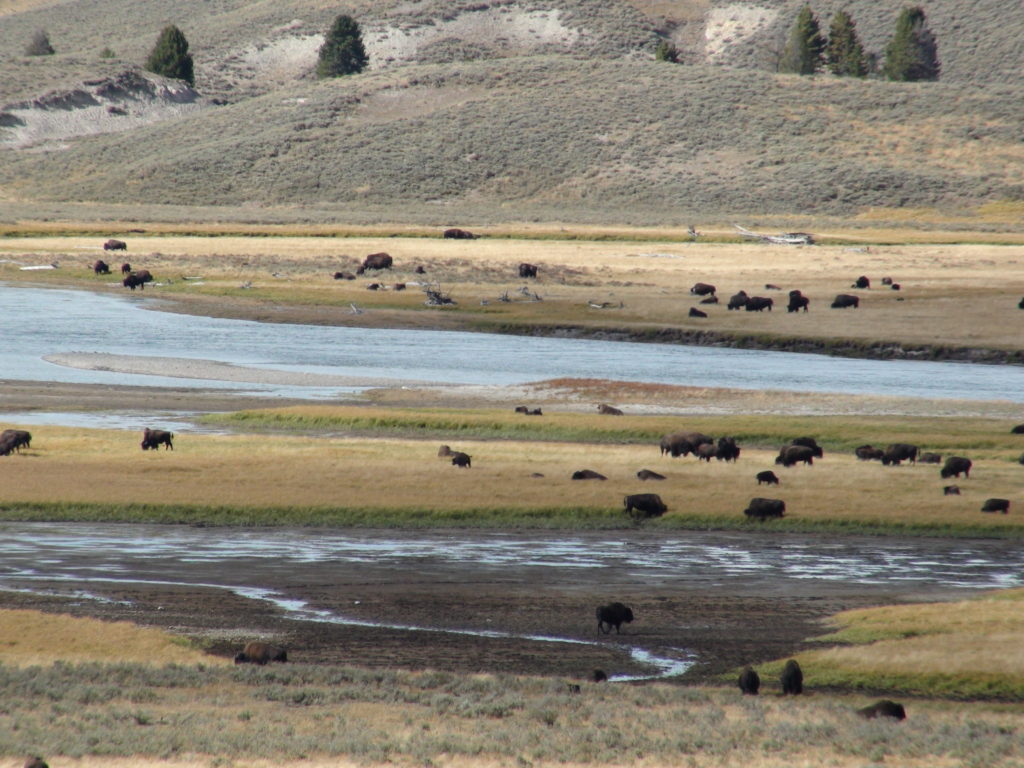
Elk can often be seen as well, but later Summer and early Fall increase the odds as the animals begin to come down from higher elevations to mate.
Bears and wolves are harder to catch sight of in Yellowstone than other animals. In the Spring there are often sightings of mama Grizzly bears with cubs. The Gibbon River and Falls is one area known for cub sightings. During the height of summer into Fall an early morning visit to the Hayden or Lamar Valleys is often the best bet for spotting bears or wolves.
While you may see Moose in Yellowstone, Island Park is actually a better place to see Moose. They can often be seen from the bridge crossings on the Buffalo and Snake Rivers by Pond’s Lodge and Mack’s Inn. Early morning and evening sightings around Big Springs are common as well.
Mammoth Hot Springs
Mammoth is the Park Headquarters with a large hotel and a Visitor’s Center. There are also restaurants, shops and gas at Mammoth.
Mammoth is located at the top of the “upper loop” near the North Entrance. While there you will want to see the Hot Springs Terraces, which is one of the premier Yellowstone sites to see.
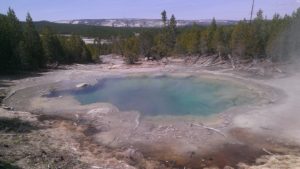
Norris Geyser Basin
Norris Geyser Basin is located at the West crux of the upper and lower loops of Yellowstone. It is a vast area of geysers and pools with miles of walkways roaming through the area. If you like walking you will like roaming around Norris.
On the way to Norris you may also want to stop and see the Artist Paint Pots and the Monument Geyser Basin.
Yellowstone Lake
If you travel the “lower loop” you will drive along the West shore of Yellowstone Lake. There are many places to pull off for views of this remarkable lake that sits above 7,000-feet of elevation. You may also want to check out the West Thumb Geyser Basin and Grant Village Visitor Center located on the South West shore.
The Rest
There is so much to see in Yellowstone it can hardly all be written about. A lot of what to see depends on the visitor. People who like hiking and walking will have a lot more options than those who want to stay closer to the car. There are several hiking trails and campsites, let alone many Visitor Centers, lodges and shops. Most important is to plan ahead using the many online resources, such as the National Park Service website, to plan your adventures day by day.
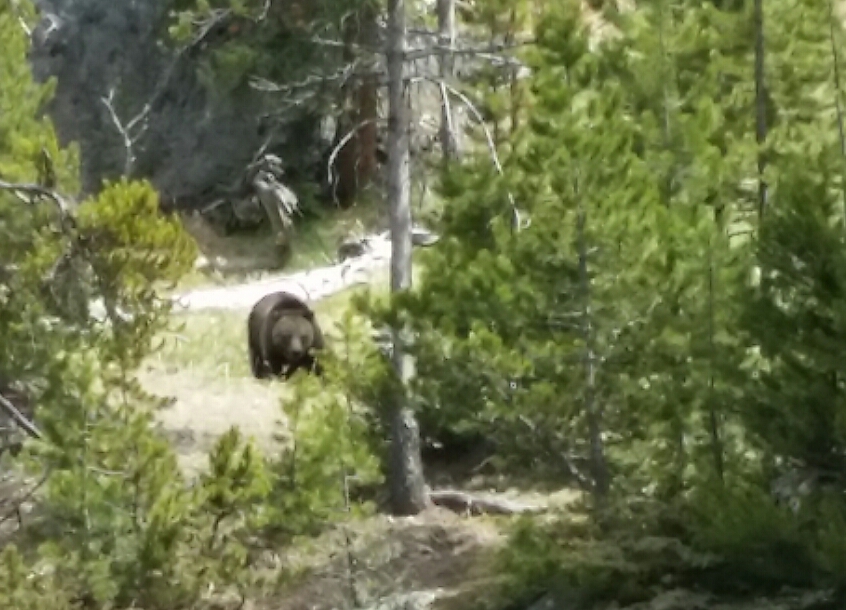
Island Park resides within a large volcanic caldera system that includes two of the three calderas that make up the Yellowstone Supervolcano structure.
As illustrated below the Island Park Caldera is the 1st Yellowstone Caldera, which is the worlds largest caldera. This caldera is 58 miles by 48 miles in size. When it erupted 2.1 million years ago it emitted 2,500 times more volcanic ash than Mt. St. Helens did in 1980.
Within the 1st caldera resides the 2nd caldera, the Henry’s Fork Caldera. This caldera was formed 1.3 million years ago.

Huckelberries grow in abundance in the forests of Idaho, Montana and Wyoming that surround Island Park.
The Huckleberry is a delicious berry and a cousin of the Blueberry. It even looks like a miniature Blueberry and tastes somewhat similar. However, the Huckleberry is sweeter and, frankly, the more delicious of the two.
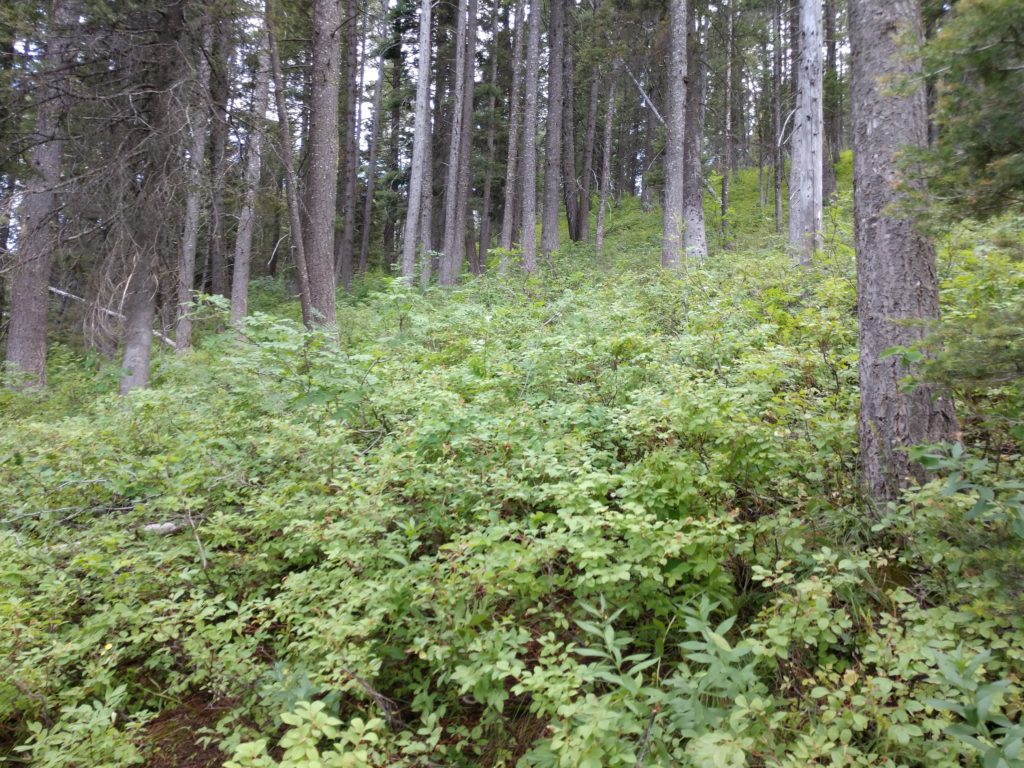
The Mountain Huckleberry is the State Fruit of Idaho and one among many types of Huckleberries that can be found.
Many people enjoy picking Huckelberries as a yearly tradition. It is a true labor of love that may entail hours of hiking and picking to get enough berries to make anything substantial.
The trick is finding where the Huckleberries are. People tend to keep their Huckleberry spots secret like fishermen do with their favorite fishing holes. Here are some tips to help you find Huckleberries (illustrated by photo below).
1. Huckleberries like a lot of shade so they grow best in the openings among trees where they are not exposed to lots of direct sunlight.
2. Huckleberries tend to grow better on slopes. South facing slopes tend to yield Huckleberries earlier and in higher numbers.
3. Huckleberries grow best in Idaho between 5,000 and 7,000 feet. Start looking at the lower elevations in later July and move up in elevation as the season progresses.
Island Park is an OHV (Off Highway Vehicle) friendly place. This includes ATVs, UTVs (a.k.a. side-by-sides) and dirt motorcycles. Basically you can ride an OHV on any road in Island Park except Highway 20. Just make sure your OHV is registered in your home state and you have an active OHV sticker.
ATVs and UTVs can also be rented locally from High Mountain Adventures or Island Park Adventures.
There are many dirt roads and trails available to travel around the greater Island Park area and you can get to about anywhere from Ashton to Island Park to West Yellowstone. In fact it would take days to explore all the possible roads and trails in the area. Below I highlight some of our favorite ATV\UTV rides and destinations.

West Yellowstone, Montana
It is always fun to take new visitors to Island Park on a ride to West Yellowstone for lunch and maybe some tourist store shopping.
West Yellowstone sits at the Eastern Gate of Yellowstone National Park and offers many places to eat and lots of shops to look in.
There are a couple of ways to get to West Yellowstone, but the easiest way is up Black Canyon (FS Road 066) to the old Yellowstone Line Trail that will take you into Montana and to West Yellowstone.
Depending where you leave from in Island Park this is usually a good 50-mile round-trip ride. Plan on getting dusty in the heat of the Summer and pack plenty of water. There are plenty of beautiful places to stop on the way to take a trail break.
Around the Island Park Reservoir
You have to get to Yale-Kilgore Road, which runs west off of Highway 20 and take it to Old Shotgun Road. The ATV Trail system can be followed all the way there.
Old Shotgun Road runs for several miles through the open sagebrush country on the north side of Island Park Reservoir.
Eventually you will get to a junction where there is a corral on the corner. Going left, or due south, takes you around the west end of the reservoir and around the south side to Green Canyon. This is a good place for a break with the reservoir nearby and lots of shade in the forest.
After Green Canyon the road goes up and over Thurmon Ridge and eventually comes out to Highway 20 near the Harriman State Park turnoff.
Here you have to cross Highway 20 to follow the ATV trail into Last Chance; a good stop for gas, food and a cold drink.
From Last Chance you can continue follow the main ATV trail that runs through Island Park. That will take you to the Buffalo River and Pond’s Lodge, which also has food and drink available.
From Pond’s Lodge you can get to anywhere in Island Park following the ATV trail system and complete the loop around the reservoir. All told this is around 40 miles.
Red Rock Pass to Elk Lake Lodge
Red Rock Road starts off Highway 20 near where the Henry’s Lake Outlet crosses underneath.
Continuing to follow the road will lead to the Idaho – Montana border at Red Rock Pass. Once you drop down into Montana you will need to watch for the first major road to the right. It should have a sign pointing to Elk Lake.
Elk Lake Lodge is within ten miles of the border. If you call ahead to let them know you are coming you can order lunch or dinner. Elk Lake also offers a full bar.